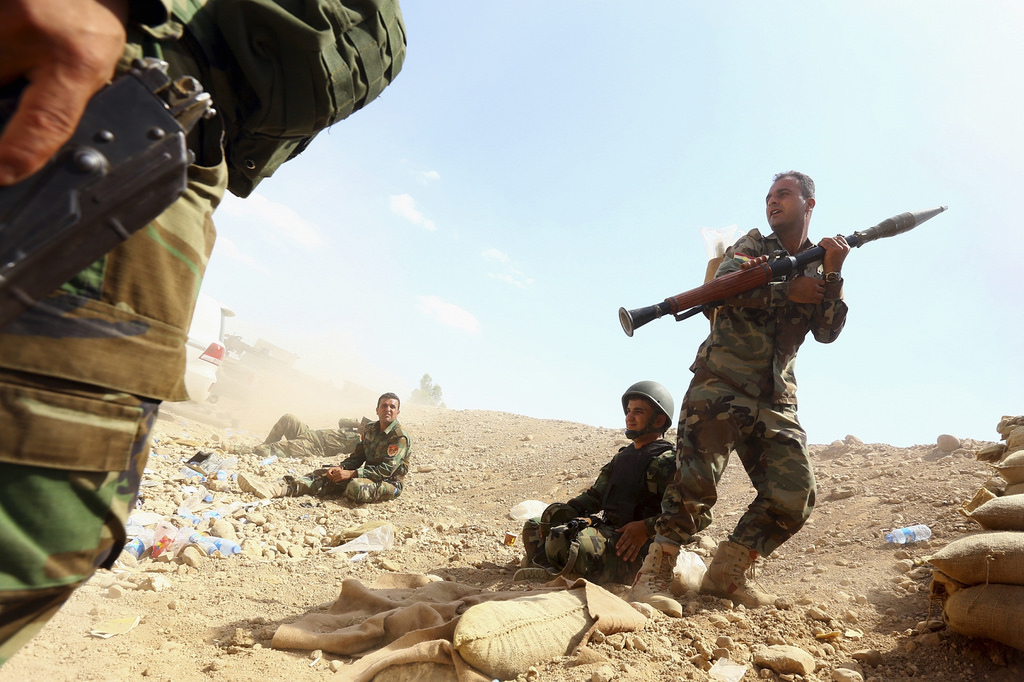Six Counterterrorism Lessons From the Syrian Civil War
It has been almost seven years since unrest in Syria began and spiraled into a civil war that has killed perhaps 500,000 people and displaced millions more. The war and associated diplomacy offer much to chew on, but the counterterrorism implications are particularly striking—for Syria is both a counterterrorism success and a counterterrorism failure. The Islamic State, one of the most vicious and powerful terrorist groups the world has ever seen, emerged out of the conflict.

Published by The Lawfare Institute
in Cooperation With

It has been almost seven years since unrest in Syria began and spiraled into a civil war that has killed perhaps 500,000 people and displaced millions more. The war and associated diplomacy offer much to chew on, but the counterterrorism implications are particularly striking—for Syria is both a counterterrorism success and a counterterrorism failure. The Islamic State, one of the most vicious and powerful terrorist groups the world has ever seen, emerged out of the conflict. But the United States and its allies have also weakened the group and managed the terrorism threat. This mixed record offers many lessons for counterterrorism.
- Civil wars and terrorism go together.
Syria illustrates how jihadists thrive on civil wars in the Muslim world. Although much is made about why individuals join terrorist groups (Are they alienated from society? Lacking jobs? And so on.), wars act as a “pull” factor. Europe, which produced thousands of fighters for the Islamic State, was not dramatically different before the Syrian war began than in 2014-15, when the number of volunteers peaked along with the conflict: The war itself excited European Muslims and led many to volunteer, often seeing themselves as would-be freedom fighters rather than clandestine terrorists.
Afghanistan, Algeria, Chechnya, Iraq, Lebanon, Somalia and Yemen are examples of other conflicts that have birthed terrorist groups or allowed existing ones to grow stronger. The wars provide a cause for recruiting, and they make the (surviving) members deadlier by giving them hard-won combat experience. Wars often allow groups considerable freedom of action. The Islamic State, for example, often took territory in areas where the Syrian regime was weak or nonexistent, using the void in governance to establish itself as an alternative. Not all civil wars in the Muslim world produce large jihadist movements, but the risk of a new war doing so is considerable.
- Enemies are often highly divided.
In these wars, the United States and other governments are not the only ones who hate and kill jihadists—jihadists hate and kill each other, often in large numbers. The Islamic State began as a split within Jabhat al-Nusra, with al-Qaeda-loyal leaders in Syria fighting with those loyal to al-Qaeda’s supposed affiliate in Iraq. The Islamic State itself fought against a range of other Islamist groups in Syria, some of which overlapped ideologically with Abu Bakr al-Baghdadi’s organization. This infighting disillusioned at least some members and weakened the movement as a whole.
Even when jihadists don’t kill each other, the movement is highly prone to division. Jihadists often disagree with one another on leadership, the appropriate level of violence, when to declare a state and other basic issues. Al-Qaeda recently suffered a major blow when its Syrian affiliate, its most important one, publicly rejected Ayman al-Zawahiri’s leadership and declared it would focus on more local concerns.
- Terrorists still rely on states.
Many of the terrorist groups in Syria—seemingly quintessential non-state actors—depend heavily on the policies of states for their success. Jihadists in Syria established themselves in part because the Syrian regime released jihadist leaders from jail and otherwise facilitated their rise. The regime wanted to paint all the opposition as in league with al-Qaeda: an absurd argument at first but one that became increasingly plausible as the more moderate opposition withered and the jihadist cause grew. Less overtly, Turkey’s willingness to keep its border open in the first years of the war as fighters crossed back and forth enabled the Islamic State and other groups to recruit tens of thousands of foreigners to their ranks. As Turkey began to close its border in 2015 and conducted military operations against nearby Islamic State positions, it became far harder for foreigners to enter the fray in Syria.
- Counterterrorism brings people together, but often only tactically.
Although most parties are unwilling to admit it, Iran, Hezbollah and various Iraqi Shiite groups all are on the same side as the United States, Saudi Arabia, Turkey and Israel when it came to fighting the Islamic State. This hasn’t produced better relations, however, because the United States seeks a different endgame than many of its de facto counterterrorism partners. Turkey fears a de facto Kurdish state, Iran seeks to cement its influence in Syria and bolster the Assad regime, while Israel fears violence spilling onto its territory. Counterterrorism is not the glue that holds everything together—and, ironically, its success makes disagreements on other issues more apparent.
- Allies need coordination.
The need to coordinate allies, a traditional U.S. role, is more apparent than ever. In a bit of good news, counterterrorism cooperation improved in recent years—the 2015 Paris attacks in particular proved a wake-up call for European allies, and information sharing on suspected terrorists became far better. However, under President Obama, the United States at first neglected the Syrian conflict but then tried to build a broad coalition against the Islamic State without devising a policy toward the Syrian conflict as a whole. The Trump administration has magnified this confusion, with allies such as Turkey and Israel increasing their involvement in Syria with little U.S. effort to manage things—indeed, the State Department, the military and the White House all seemed to send Turkey different signals when it invaded territory in Syria controlled by U.S.-allied Kurds. Allies can magnify U.S. power, but if the United States doesn’t try to lead them, they can make the chaos worse.
- Don’t rely on training programs.
Finally, the United States performed poorly on one key counterterrorism task: building up local allies. Despite years of training and billions of U.S. dollars, Iraqi forces fled much smaller and lightly armed Islamic State forces when the latter swept through the west of the country in 2014. U.S. efforts to build up moderate Syrian opposition forces mostly met with failure. As a result, the United States relied on Syrian Kurds and otherwise supported forces that could fight but could not govern with broad popular support. Such training is a political as well as a technical task, but the United States often uses it as a way of acting while avoiding hard political decisions.
Syria was not Iraq, Iraq was not Afghanistan and the next conflict involving global terrorist groups will be a different one entirely. But if the United States can learn these six lessons, it might do better the next time around—or at least avoid doing far worse.





